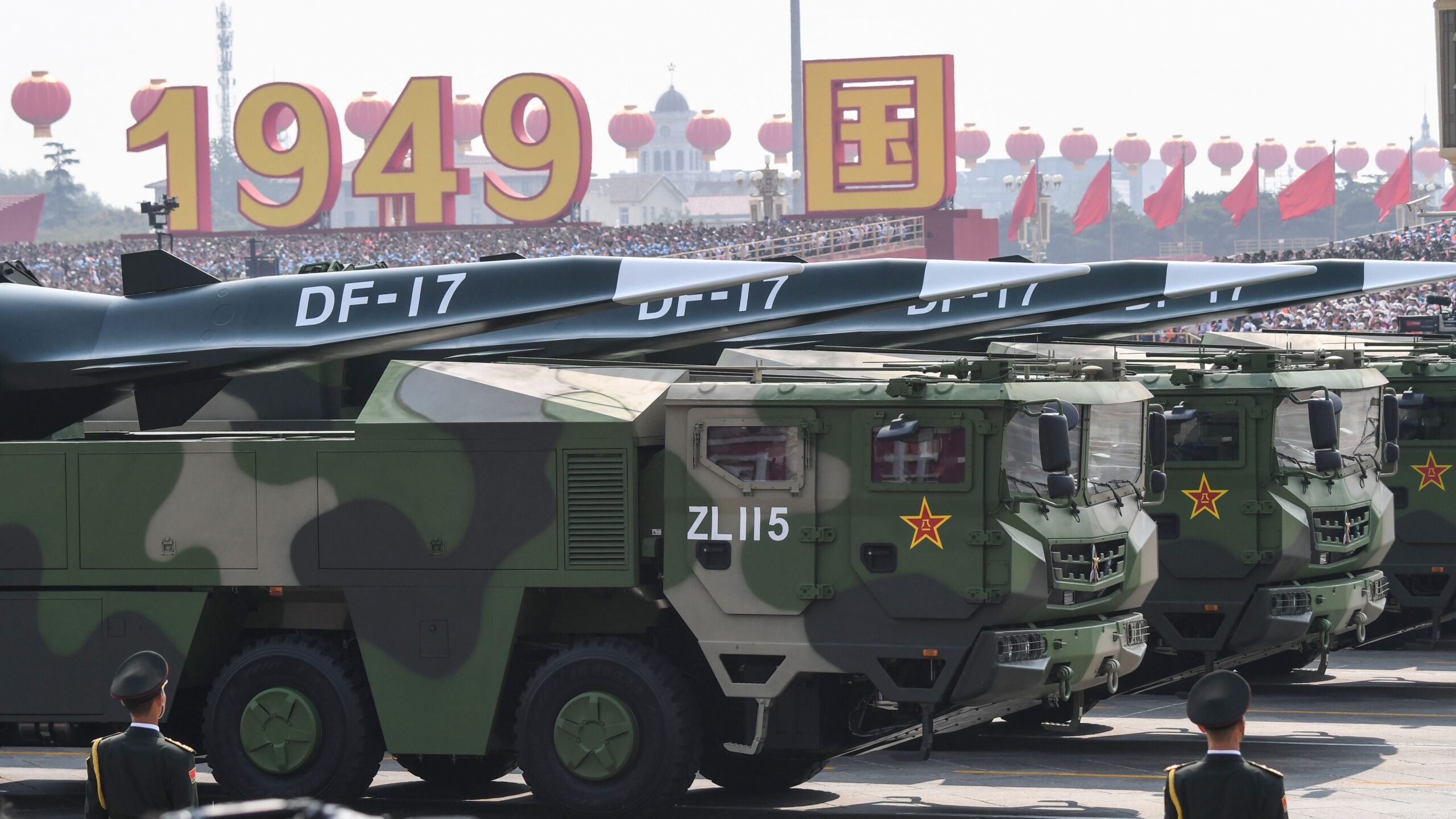
Military vehicles carrying DF-17 missiles participate in a military parade at Tiananmen Square in Beijing on October 1, 2019. (Greg Baker/AFP via Getty Images)
WASHINGTON: The Space Development Agency will “imminently” launch a contest for development of 28 missile tracking satellites, a senior defense official said today — a move made possible by the passage of the fiscal 2022 omnibus spending bill that included an extra $550 million for the buy.
The so-called Tranche 1 Tracking Layer satellites, to be based in Low Earth Orbit (LEO), are the first operational set in a larger planned constellation of some 200 birds aimed at tracking both ballistic and hypersonic missiles, the latter of which pose challenges to current Defense Department missile warning/tracking capabilities. In particular, the satellites are aimed at providing coverage over the Indo-Pacific theater as China moves to develop an array of hypersonic missiles.
The total cost for development and launch of the whole Tracking Layer is now budgeted at some $2.5 billion, the official said.
The planned constellation would be “a first in the ability to be able to do global coverage for the missile tracking mission,” the official explained as part of a background briefing for reporters. “So right now, the department has satellites that provide global missile warning capability to essentially detect launches of missiles, but nothing that can actually detect the new advanced missiles, hypersonic glide vehicles and such. And so this would be the first to be able to provide that over the globe.”
SDA plans to put out a solicitation for the Tranche 1 Tracking Layer “in the next one or two weeks,” with an eye on making awards to two vendors, the senior official said.
The agency is making last-minute fixes to take into account industry feedback, as well as to reflect the funding change from the omnibus bill’s reduction of the $750 million plus-up that had been included in the Senate Appropriations Committee’s markup, but not that of their House counterparts.
That said, the senior official explained that there isn’t any change to the scope of the Tranche 1 effort because of the smaller size of the plus-up.
Indeed, the extra $550 million still allows the agency in essence to jump start its originally planned launch schedule — starting in early 2025 rather than 2026. (The larger amount would have allowed SDA to do two launches next year and two in 2024.)
While Indo-Pacific Command will have to wait for the entire Tracking Layer to be on orbit before it will be able to count on global coverage, the Tranche 1 satellites will be able to provide some regional capability. And SDA plans on those being operational “by the end of calendar year 2025,” the senior official said.
In October 2020, SDA tapped L3Harris and SpaceX for early-design variants of the Tracking Layer sats as part of the agency’s Tranche 0 demonstration. (Tranche 0 also includes early-design satellites in the Transport Layer for data relay.) SpaceX won $149 million and L3Harris $194 million to each build four satellites to detect ballistic, cruise and hypersonic missiles using a wide field of view IR sensor. L3Harris in December announced that it had passed SDA’s critical design review for Tranche 0. SpaceX recently wrapped its review, but SDA hasn’t released the results.
The 28 total Tranche 0 satellites are on track to launch in two sets of 14: the first in September and the second in March 2023, the senior official said.






















